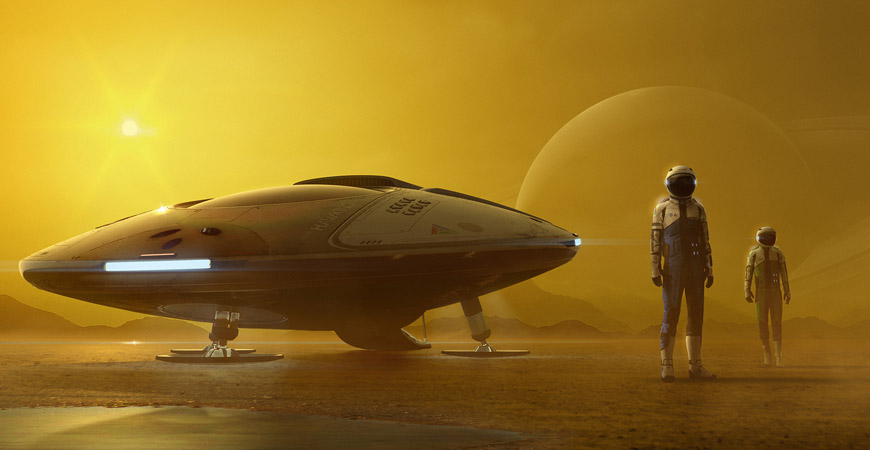Jeffrey Morris, writer, director and production designer, and founder of FutureDude shares insights on Saturn 5, one of his latest projects. This children’s television series currently in development with National Geographic Kids and Pixomondo. Inspired by the Saturn 5 rocket, a powerful icon of the past, the story is designed to motivate a new generation to look to the stars.
What is Saturn 5 about?
Saturn 5 is an epic 13-hour science-fiction adventure set among the planets and moons of the solar system in the year 2099. In this futuristic and idyllic world, today’s threat of climate change has been solved, and life on other planets is a reality. It tells the story of a group of teenagers with diverse personalities and abilities who embark on a dangerous voyage to save the solar system which is beginning to fall apart due to a looming energy crisis.
What makes this show unique?
Saturn 5 is realistic science-fiction. It’s based on things that are projected or possible but have not yet happened. The kids watching the show could be the ones who make them a reality. Also, the adventures of the teenage crew take kids through the solar system to actual planets. That’s never been done before. So while they’re mesmerized by the story, they’re learning real facts and real science.
Why is it important to you to create a show that’s positive?
So much of sci-fi is dark and frankly a little depressing. For some stories it really works, but that dark look isn’t really motivating to this age group. For Saturn 5 we challenged ourselves to make something that’s optimistic and uplifting, but has all the action, adventure, and peril that will make it exciting. We want to make kids feel like they want to do this when they grow up. To contribute and make it happen.
How do you appeal to tech-savvy kids who have grown up with smart phones, realistic video games and even virtual reality?
There can be a risk of being too “educational” so there are a lot of ways we’ve made this series engaging. The visual style will be fun, with light and colorful cinematography and a brisk pace that serves up the education in a fun way. There’s also all the cool technology and fascinating locations, combined with the emotional journey of the characters. Much of the education is not so obvious – like every character is named after a real space or science luminary. We want kids to be motivated to Google aspects of the show to learn more.
You mentioned adventure and emotion. What else makes a good story?
As a writer, I pay a lot of attention to the back story of the setting and characters. Some of those details get shared over time, but even the ones that don’t get shared make the storytelling feel more rich – like breadcrumbs that make you want to go deeper and deeper. It’s part of what creates fans who really connect with the characters. They wonder where the characters have been and anticipate where they’re going. It helps viewers connect to the show by using their imaginations.
